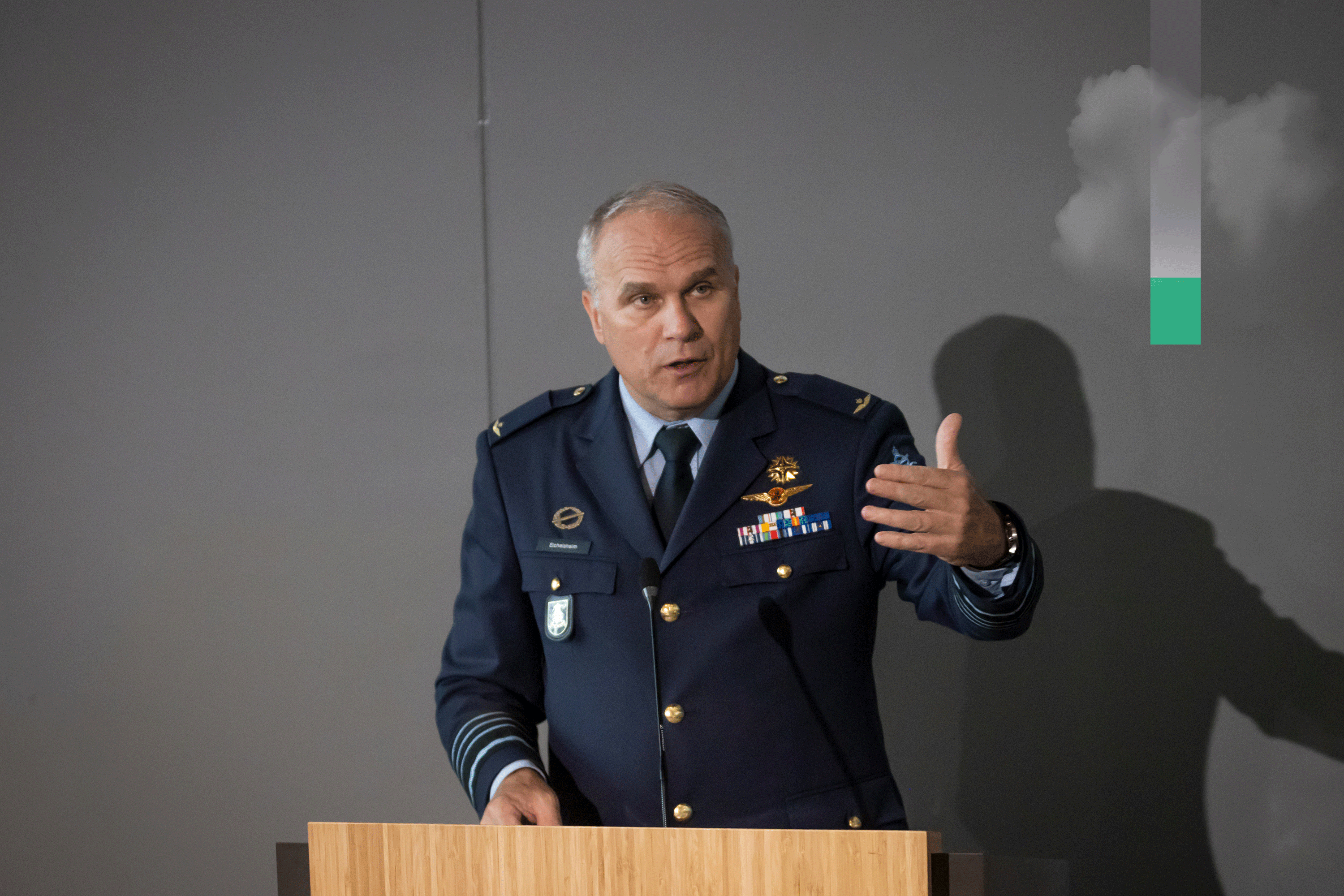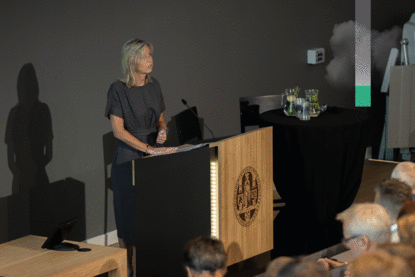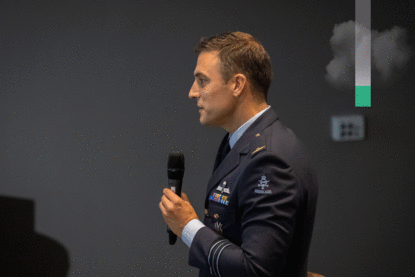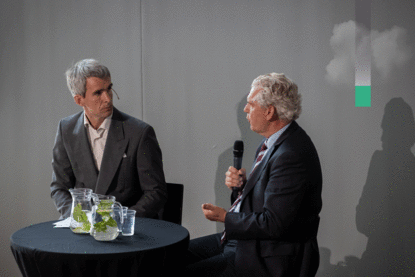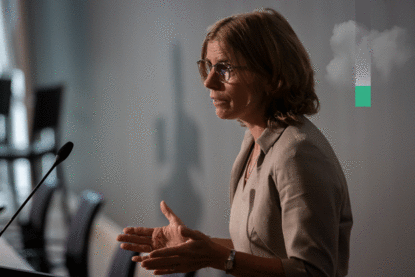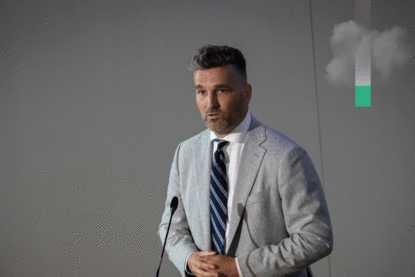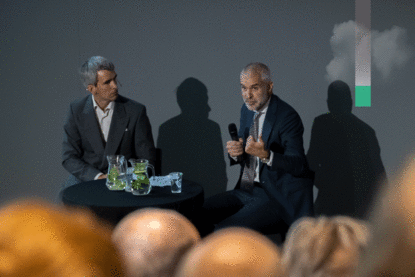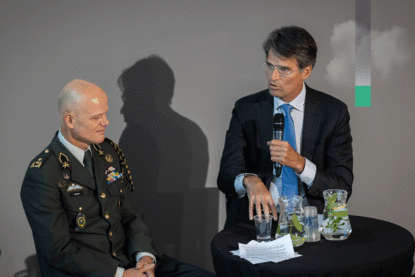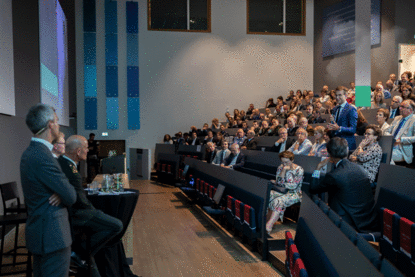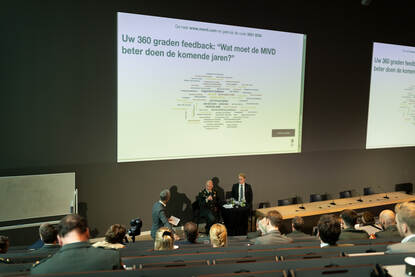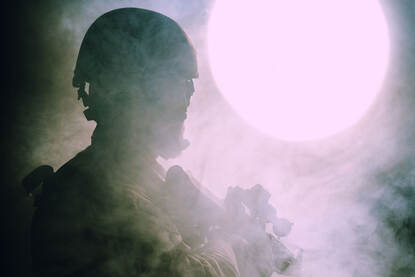In his speech, Netherlands Chief of Defence General Eichelsheim focuses mainly on military applications of Artificial Intelligence (AI). He describes the approach taken by China and asks what we are doing to counter it. ‘Lagging behind is not an option in this race.‘
Following on from the theme of ‘Fog of War 2.0’, General Eichelsheim states that the fog is thickening more in the cyber domain than anywhere else. He posits that China will probably have AI-based operational weapons systems capable of operating fully autonomously in all domains within the next 15 years. Eichelsheim: ‘If China assumes a leading position in military AI and we lag behind, that would be a significant cause for concern. Lagging behind is not an option in this race.’
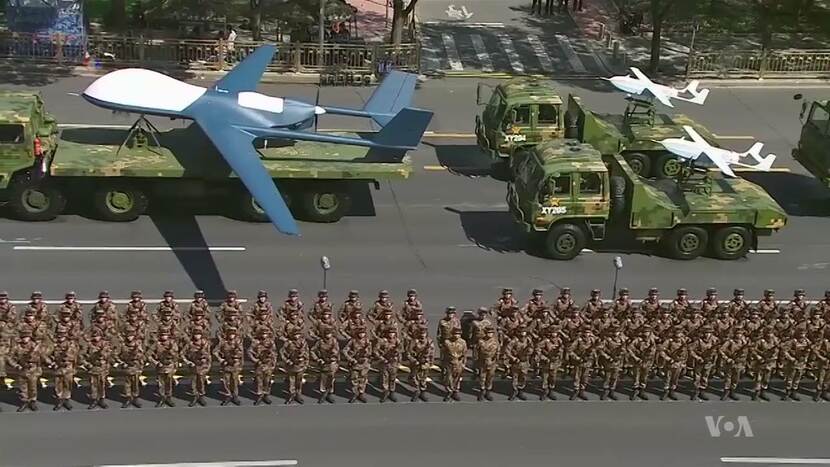
The General discusses four ways in which China is actively developing AI:
1. China is currently developing autonomous weapons systems that are capable of independently attacking a target.
2. China is developing AI applications that are capable of supporting decision-making.
3. China is experimenting with swarm technology, which enables a large number of unmanned vehicles to operate as an autonomous swarm capable of performing coordinated tasks independently.
4. China utilises AI for intelligence gathering and the automation of surveillance and reconnaissance activities.
If China assumes a leading position in military AI and we lag behind, that would be a significant cause for concern.
How did China reach this point?
Eichelsheim then discusses how China has been able to reach this stage. ‘Driving this development is China’s nationwide strategy that involves the use of the private sector and the academic community to develop the Chinese armed forces. But the private sector includes not only the traditional defence industry, but also companies such as Alibaba and Huawei: names even Dutch consumers will recognise. However, not everyone knows that these are dual-use companies – companies that engage in civilian activities but are also encouraged to share their knowledge for the purpose of developing military applications. In addition, China has been able to acquire know-how in European countries for many years. The Netherlands, but also the EU and the West as a whole must remain highly vigilant in order to protect our unique knowledge and expertise. Unfortunately, much of it has already left our country.’
We are lagging behind
General Eichelsheim then confronts the audience with the fact that the EU was leading AI research 10 years ago, but has now been overtaken by China. However, he also states that even a country like China experiences the inevitable challenges. ‘China has become dependent on foreign semi-conductor technology for the manufacture of micro-electronics, which constitutes a limiting factor. Export controls and the prevention of undesirable knowledge transfer play a significant role in this regard. Furthermore, I continue to believe that the human ethical dimension should remain part of military AI development. If our adversaries ignore this dimension, they could pose a risk to us. In that case, we would have to try and pick up the pace in other areas in order to come up to speed with them. Whether we like it or not, the permanent strategic competition that we are currently engaged in is all about being the fastest and the smartest.’
China has become dependent on foreign semi-conductor technology for the manufacture of micro-electronics, which constitutes a limiting factor.
The ‘OTLF’
General Eichelsheim presents the ‘officer tasked with lifting the fog’ (OTLF) as an analogy for the work of the Netherlands Defence Intelligence and Security Service (DISS). This is used as an expression of frustration within the army when fog gets in the way of a firing exercise. The ‘officer tasked with lifting the fog’ is expected to address this problem. The people working for DISS are similarly tasked with providing a clear view in domains that are deliberately being fogged up by adversaries. Eichelsheim: ‘The Netherlands has DISS, with officers who have been tasked with lifting the fog. They are capable of cutting through it, so that we can look ahead and prepare to face threats based on facts. Your strength lies in identifying the truth. I know I can count on you.’
Central control and reinforcement of the J2 cell
Operational units have recently been partially and temporarily assigned to DISS to meet the armed forces’ need for operational and tactical intelligence more effectively. General Eichelsheim made this known during the DISS seminar: these units are also deployed for the collection and analysis of operational and tactical intelligence. In addition to this reinforcement of operational and tactical intelligence capabilities, the J2 cell within the Directorate of Operations will also be strengthened and expanded. The J stands for joint, meaning all the branches of the armed forces, and the 2 stands for intelligence. This allows for more control of the operational and tactical intelligence requirement in the various branches. Establishing robust J2 capabilities also strengthens the capacity for dissemination of that intelligence among operational units. Eichelsheim: ‘Central control carried out by the Chief of Defence, combined with the placing of units with DISS, increases the decisiveness of the Defence organisation’s intelligence system.’
